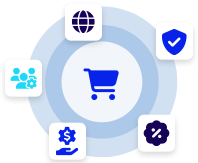Prestige pricing, also known as luxury pricing, is a strategic approach where products or services are priced significantly higher than competitors to create an aura of exclusivity and luxury. This method leverages the psychological impact of price on perceived value, where higher prices are associated with higher prestige and desirability. It is often applied to high-end, luxury items targeting a niche market willing to pay a premium for quality, status, or both.
Examples of Prestige Pricing:
- Luxury Automobiles: Brands like Rolls-Royce and Bentley use prestige pricing to reinforce their image of exclusivity and superior craftsmanship.
- High-End Fashion: Designer brands such as Louis Vuitton and Gucci price their products at a premium to maintain a luxury status.
- Technology: Apple’s pricing strategy for its products, like the MacBook Pro and iPhone, reflects a prestige pricing approach, positioning them as premium options in the market.
Prestige Pricing Strategy in SaaS:
- Enterprise-Level Plans: In the SaaS industry, prestige pricing is commonly used for enterprise or premium subscription plans. These plans offer advanced features, enhanced support, and additional services that are not available in basic plans.
- Enhanced Perception of Quality: By pricing their high-tier products at a premium, SaaS companies can convey a sense of reliability, stability, and superior service. This strategy is effective in attracting businesses that prioritize quality and advanced features over cost.
- B2B Prestige Pricing: For B2B companies, implementing a prestige pricing strategy can help establish their software as a top-tier solution. This can be particularly appealing to enterprises seeking robust, scalable, and feature-rich solutions that justify a higher investment.
Benefits of Prestige Pricing:
- Brand Differentiation: By adopting a prestige pricing strategy, companies can differentiate their products from competitors, positioning themselves as providers of exclusive, high-quality solutions.
- Targeting High-End Markets: Prestige pricing allows businesses to target customers who are less price-sensitive and more focused on the perceived value and quality of the product or service.
- Increased Perceived Value: Higher prices can create an impression of greater investment in infrastructure, customer support, and ongoing product development, thereby enhancing the overall perceived value.
Challenges of Prestige Pricing:
- Market Size: The niche market for prestige-priced products can be limited, requiring a deep understanding of the target audience.
- Justifying the Price: Companies must ensure that the higher price is justified by the quality, features, and benefits provided, as customers will have high expectations.













